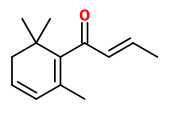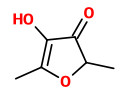Pouteria sapota (Jacq.) H. E. Moore & Stearn - syn.Achras lucuma Blanco; Lucuma mammosa auct. - Sapotaceae
mamey sapote, marmalade-plum, marmalade-tree, Mamey Sapote, Große Sapote
Evergreen or deciduous tree, native to Central America.
„The mamey sapote is related to other sapotes such as sapodilla (Manilkara zapota), abiu (P. caimito) and canistel (P. campechiana), but unrelated to the black sapote (Diospyros digyna) and white sapote (Casimiroa edulis). It should not be confused with the mammee apple (Mammea americana)…Some of its names in Latin American countries, such as mamey colorado (Cuba), zapote colorado (Costa Rica) and zapote rojo (South America), refer to the reddish colour of its flesh in order to distinguish it from the unrelated but similar looking Mammea americana, whose fruit is usually called „yellow mamey“ (Spanish: Mamey amarillo)“ wikipedia
„The fruit may be round, ovoid or elliptic, often bluntly pointed at the apex, varies from 3 to 9 in (7.5-22.8 cm) long, and ranges in weight from 1/2 lb to 5 lbs (227 g-2.3 kg). It has rough, dark-brown, firm, leathery, semi-woody skin or rind to 1/16 in (1.5 mm) thick, and salmon-pink to deep-red, soft flesh, sweet and pumpkin-like in flavor, enclosing 1 to 4 large, slick, spindle-shaped, pointed seeds, hard, glossy-brown, with a whitish, slightly rough hilum on the ventral side. The large kernel is oily, bitter, and has a strong bitter-almond odor.“
https://www.hort.purdue.edu/newcrop/morton/sapote_ars.html
„The pulp of mature fruits is salmon pink, orange, red or reddish-brown in color, soft and smooth to finely granular in texture, usually low in fiber. The pulp has a sweet, almond-like, unique flavor…. The mamey sapote is usually eaten in preparations where the fresh or frozen pulp is mixed with other ingredients to make milkshakes or ice cream. It also may be eaten fresh directly from the fruit by cutting it lengthwise and removing the seed. It is also excellent for use in jellies, pastes, and conserves.“
http://www.worldagroforestry.org/treedb/AFTPDFS/Pouteria_sapota.pdf
„Volatile compounds were isolated from sapote fruit by simultaneous steam distillation-solvent extraction according to Likens-Nickerson. Compounds were identified by capillary GC and GC/MS. Twenty-four components were identified in the aroma concentrate, from which benzaldehyde, hexanal and hexadecanoic acid were found to be the major constituents.“
[Pino, J. A., Marbot, R., Sauri, E., & Zumárraga, C., Volatile components of sapote (Pouteria sapota (Jacq.) HE Moore et Stern) fruit. Journal of Essential Oil Research, Vol.18(1), 2006, 22-23]
„Pouteria sapota is a tropical fruit that is commonly found in central and north part of South America where is widely consumed by its biofunctional properties. The aroma active volatile compounds of Pouteria sapota fruit were studied by using the molecular sensory approach, which includes a SAFE (Solvent Assisted Flavor Evaporation) distillation to get a volatile extract that resembles the fruit aroma, and the combination of GC-O (Gas Chromatography coupled to Olfactometry) with GC-MS analyses to identify odour-active compounds. By AEDA (Aroma Extract Dilution Analysis), β-damascenone, furaneol, linalool, (Z)-3-hexenal, and benzaldehyde, were identified as key aroma compounds in this fruit.“
[Martín, Diana A., and Coralia Osorio. „Identification of aroma-active volatile compounds in Pouteria sapota fruit by aroma extraction dilution analyses (AEDA).“ Quimica nova 42 (2019): 607-610]
https://www.scielo.br/j/qn/a/dGmDykCxzP4YWg6HdxKDkTq/?lang=en

Pouteria sapota, Los Aguacates, Yucatan, México (2025) © Christopher Medina CC BY-SA 4.0 inaturalist.org




